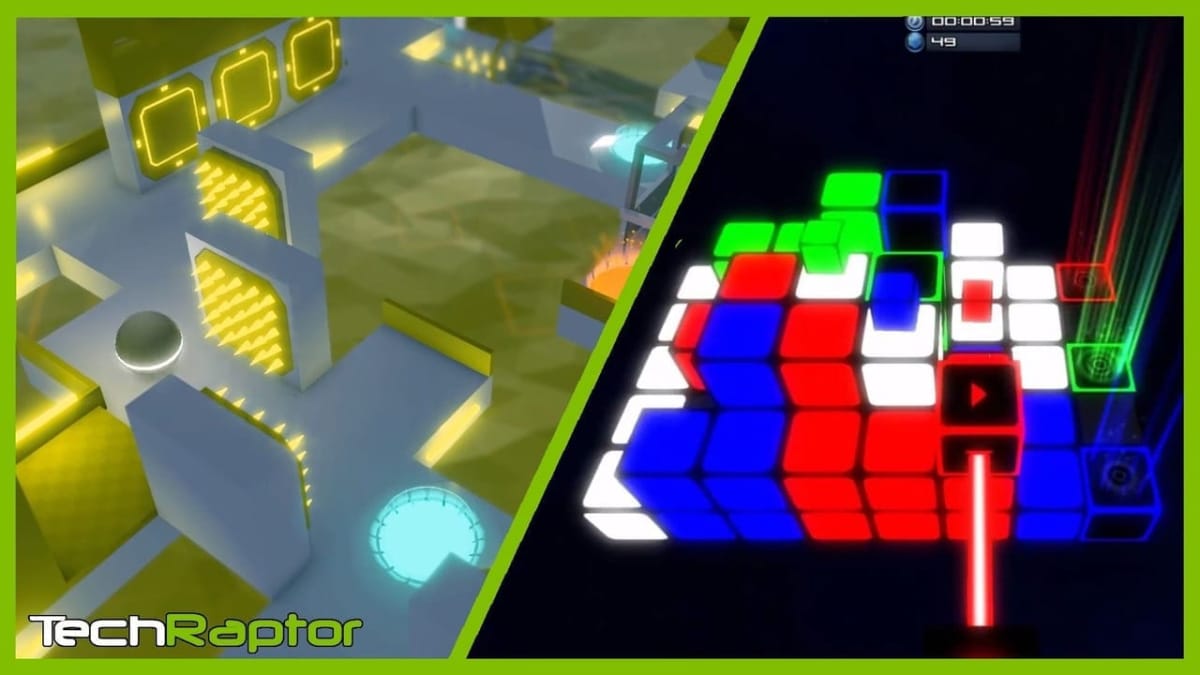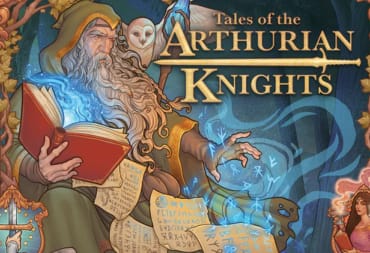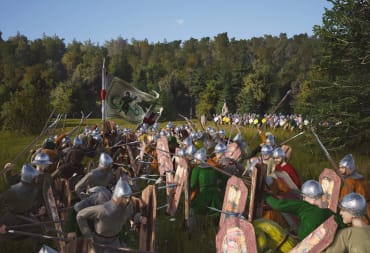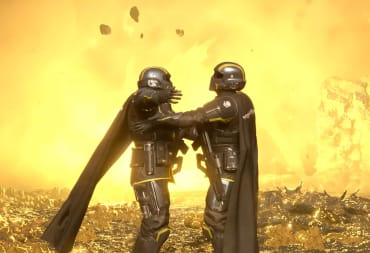Welcome to Coverage Club, the regular series where we shift our critical eye towards smaller games that deserve some attention. Each week, our review editors select two titles and provide honest first impressions in the same style as our full reviews. Games can range from brand new titles hitting Early Access to older hidden gems that never got their due. No matter your preferences, you’re sure to find something off the beaten path here. In this week's episode, we discover if the little ball really can in The Little Ball That Could. Following that, we expose colors for the fakes that they are in Fake Colours.
The Little Ball That Could
Covered by Trevor Whalen
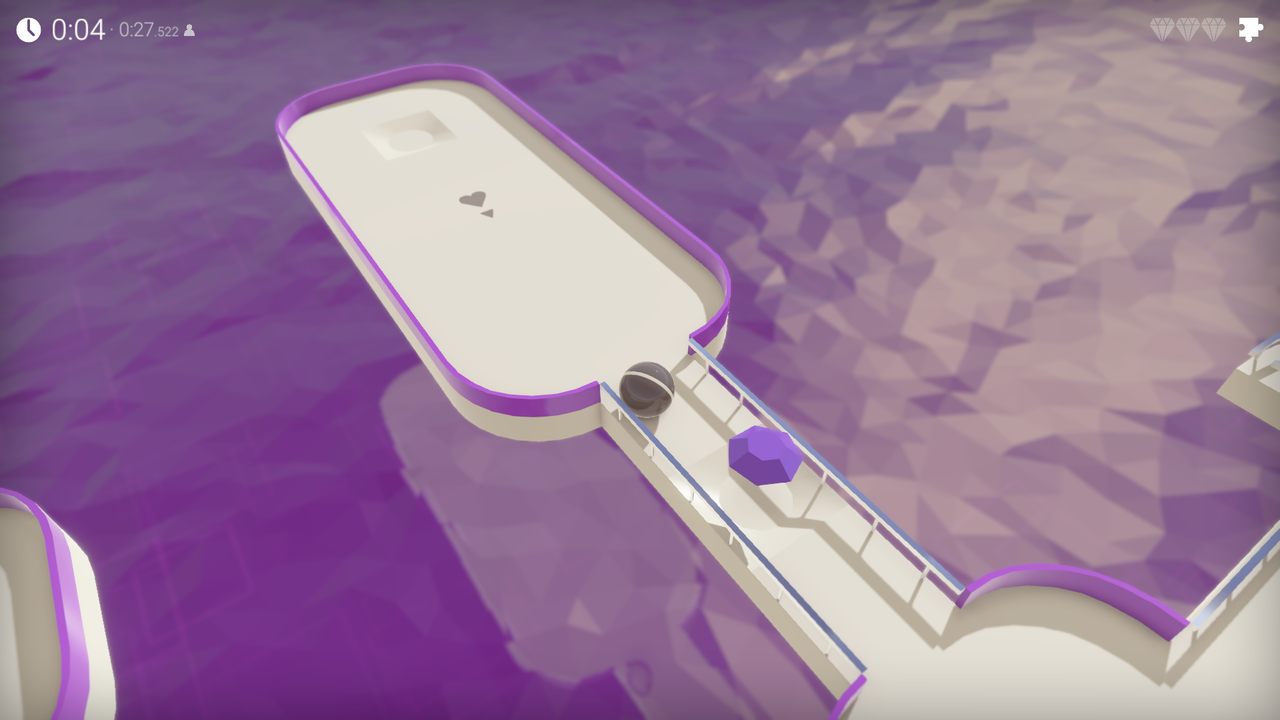
NaissusWorks’ The Little Ball That Could is an enjoyable marble platformer. In each of the game’s stages, you roll a ball through a course with curves, ramps, platforms, obstacles, and ledges.
You need to reach the end of the stage, a spinning heart-shaped jewel, while also completing other challenge goals. These include collecting three gems, collecting a puzzle piece, and completing the stage in a time limit. It’s difficult to complete the time-limit challenge while also collecting all the gems and the puzzle piece, so you’ll likely play through a stage at least twice to complete it fully. There seem to be methods to collect each item while also finishing within the time-limit, but you’ve got to be a ball-rolling Houdini to do it.
As a marble ball, you can break. If you fall too far, you’ll shatter into a thousand pieces. Little blue carpeted areas are placed throughout that provide a soft landing. In some levels, I saw these placed strategically on areas beneath a high ledge, but it’s difficult to aim straight for them. Often, at these sections or others, I’d send my marble ball careening off the stage into the water below or down a great distance and towards a Humpty-Dumpty-like fate. I played primarily with keyboard, but when I tried an Xbox gamepad, I played about the same. Any mess-ups were on me. The game movement controls and feels solid.
The music that plays in the background is pleasant and serene. It gives the game more emotion than it deserves, though. It made me feel like I was going on some significant adventure and was fighting and overcoming incredible hardships and struggles, but I’m just a marble ball rolling through obstacle courses! The title The Little Ball that Could suggests some such story as well, and there is an intro section to each world set in some kind of factory. Nonetheless, I could not discern any grand story through the first world. As far as I can tell, I’m just a marble ball rolling through obstacle courses.
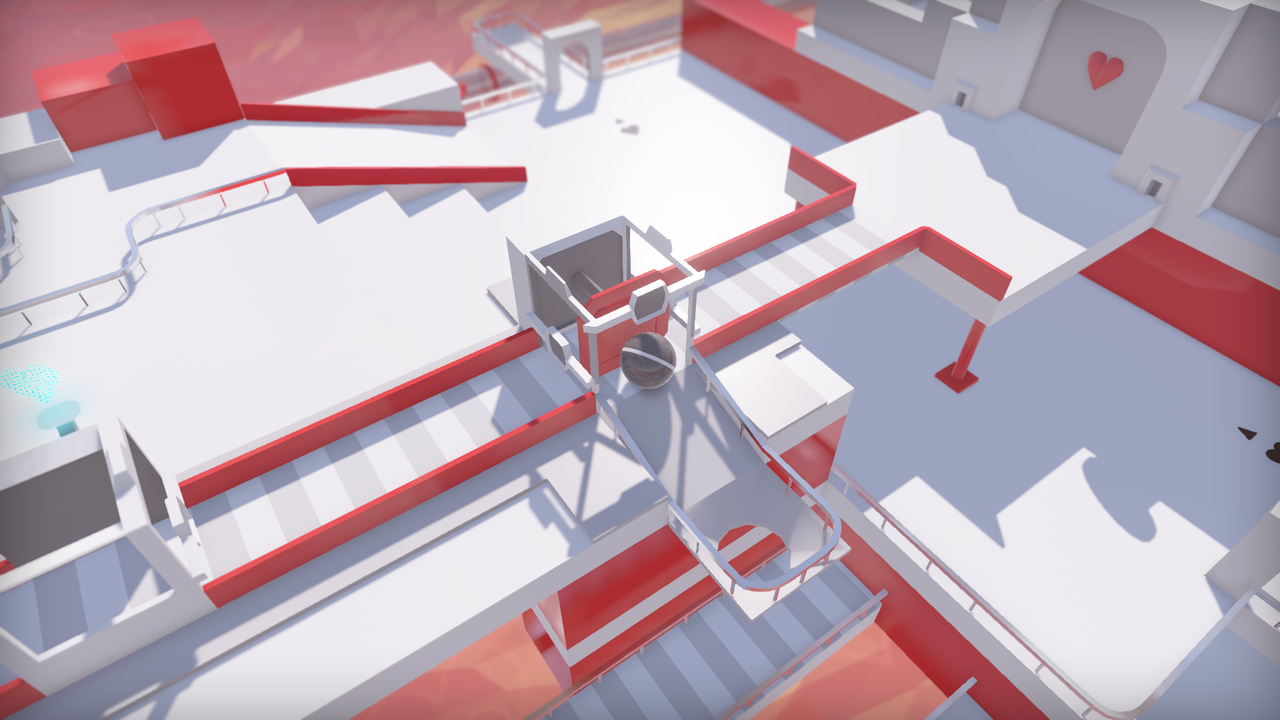
Worlds are named after colors: Purple World, Blue World, Green World, Yellow World, and Orange World. Unlocking the next world requires completing a certain number of challenges in the prior world. Each of the challenges I noted above unlocks a “star.” The Blue World required 40 stars, the Green World requires 80, and so on. You can also unlock different skins for the ball as you progress. I unlocked an emerald skin after completing all the stages in the first world.
From what I’ve played of the Blue World, the obstacles and design of the levels get much more complex. With a total of five worlds, and considering how much fun I’ve had in only one, the eight dollar price tag is worth it. There’s a demo on Steam, so you can check that out if you’re not sold.
The Little Ball That Could was played on PC using a copy provided by the developers.
Fake Colours
Covered by Robert N. Adams
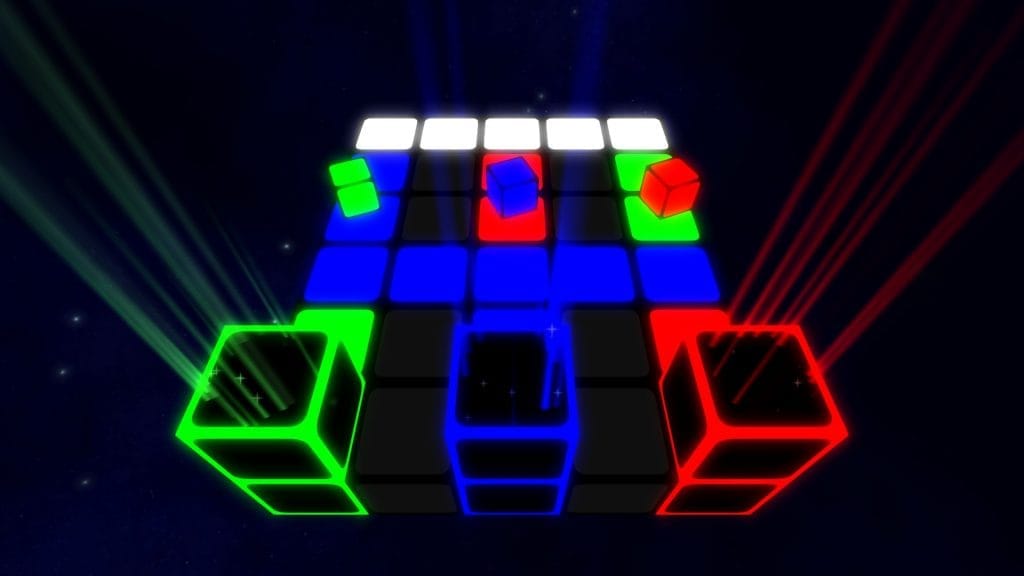
I dabble in puzzle games now and again, and Fake Colours looked to be something that I might find interesting. The premise of the game is simple: get all of the cubes from their starting positions to the goal squares at the end of the level. Knowing what you need to do and actually being able to do it are two very different matters.
Fake Colours features 30 levels. The first five or so levels get you acquainted with the game's mechanics. Cubes can only move on white squares, squares of their own color, or over each other. They can climb up or down one space at a time, but there has to be two free spaces in the direction you're headed. Later on item pickups allow you to change the color of your cubes by landing on them. These simple mechanics combine into a game that I found to be immensely challenging.
Each successive level felt rewarding to complete. There were no obvious solutions after the early tutorials, and I genuinely enjoyed working out the problem. It felt great once everything clicked and I figured out how to get the cubes to move in just the right ways to land in their respective goals. Unfortunately, a few problems became evident in the short time I played the game.
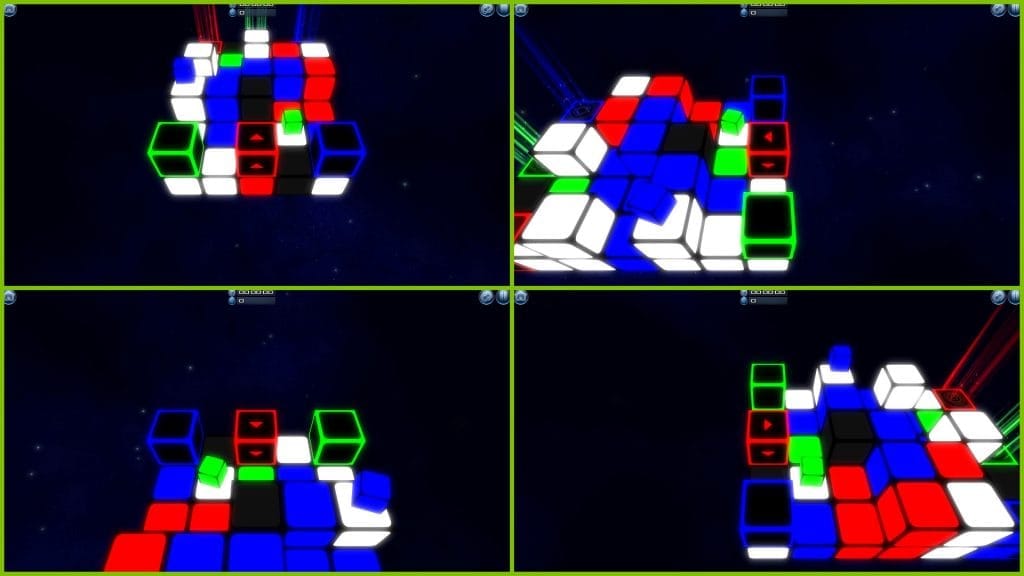
The camera controls in Fake Colours are tricky to deal with. You're only able to lock the camera to the four cardinal directions, and the camera stays focused on each piece. There's no free camera or way to get an overall view of the board. A tutorial later in the game suggests that you use a cube to scout out the rest of the level and see what's ahead. I can concede that poor visibility might be a deliberate part of the design. Whether it is or not, I can't say that I'm terribly fond of it.
The game's music is okay, but the sole track that you listen to has a very obvious point where it loops. It broke my concentration once or twice, and I would have liked to see the loop be a bit smoother.
Aside from the iffy camera and occasional music hiccups, the game's controls were mapped out in a way I found to be nonsensical. Moving selected cubes was done with WASD, a set of keys familiar to many PC gamers for decades. Switching between the cubes uses the N key for some reason, and rotating uses the E and R keys. I would have liked to see Q & E be used for rotating and space (or a key closer to WASD) be used for switching between the cubes.
As for the challenge, I ended up tapping out at Level 14, just 84 minutes into the game. I tend to lean more towards the casual side of puzzle games, and Fake Colours felt like it strayed a bit closer to the hardcore side of the genre. I think the overall low number of levels means that big difficulty spikes are just par for the course. Beating 13 out of 30 levels before getting frustrated wouldn't seem as bad if it were 26 out of 60 levels or 39 out of 90.
Fake Colours seems to be a puzzle game for genuine puzzle enthusiasts. You should check this game out if you have the spatial reasoning to solve a Rubik's Cube in a couple of minutes and you go through puzzle games like a madman. If you tend to be on the more casual side of things, you're likely going to hit a wall less than halfway through.
Fake Colours was played on PC via Steam with a copy provided by the developer.
What do you think of this week’s Coverage Club selections? Do you know of an overlooked game that deserves another chance? Let us know in the comments below, and don’t forget to follow our Steam Curator to keep up to date with all our reviews.
Have a tip, or want to point out something we missed? Leave a Comment or e-mail us at tips@techraptor.net
